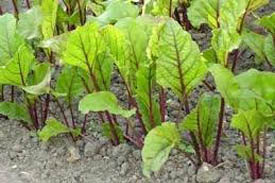Herbal Carpets for Kings and Modern Homes
 Smaller lawns are becoming popular these days, perhaps because people have less time to manage their space. The growing populations of cities are causing a new trend in house design, towards the small, more compact home.
Smaller lawns are becoming popular these days, perhaps because people have less time to manage their space. The growing populations of cities are causing a new trend in house design, towards the small, more compact home.
Years ago, people would ask me for suggestions for an alternative to the conventional lawn. Well, I don’t blame them for we all want to be a bit unique, to be special, and to break away from the common row of houses that the builders design for efficiency with their postage stamp lawns. The lawn, since the turn of the century, is heralded with the symbolism of status and leisure lifestyles. It is only fitting that the modern home owner think about alternative lawns.
When Diane and I first bought our small farm we took great delight in walking toward the barn’s front pasture with its fragrant chamomile ground cover. Chamomile, Anthemis noblis, is more commonly known as Roman chamomile, whig plant, or garden chamomile. The Roman variety has low terminal flower heads rising 8″ to 12″ in June through July, producing a heavenly scent that only the very rich in olden times was known to enjoy. For example, on your next vacation trip to England you will certainly want to visit Buckingham Palace. One of their lawns is set aside for garden parties and it is exclusively Roman chamomile. No, I did not get an invite to a party, I was just a tourist.
To start a large expanse of such a lawn you will want to start your chamomile seeds in a large seed flat, or many flats, transplanting to a recently shallow tilled site with a pH of 6.0 to 7.0. Space your plants every 4 inches in a checkerboard fashion. When the plants are 3″ high, top them with a lawnmower set at the highest cut, then reduce successive cuts over the season down to 1″. By now the plants will have bushed out and become a thick mat. If you want the fragrance and a reseeding, let them go to seed in the second year after flowering in July. Then start the cut back. Use a grass catcher on the lawnmower and add to your compost pile. Chamomile will stand a surprising amount of foot traffic. Initial weeding will be a chore, but once the plants take hold they will crowd out most other weeds. Avoid the use of herbicides or Chamomile will not grow. Avoid chemical fertilizers or you will have spindly plants. Each fall, give the plot a dusting of shredded compost or dried manures to 1/2″.
In France you will see the Boulevardiers sitting in the sidewalk cafes drinking chamomile tea, watching the pretty girls walk by. Chamomile tea, sometimes blended with other herbs, is famous in history as a relief from flatulence, colic, dyspepsia, fever, and restlessness in children. The flowers can be made into a rubbing oil for swellings, painful joints and calluses. Diane and I make our tea as follows: Use 1 tablespoon of fresh flowers, no green caps and leaves, in one cup of boiling water. Remove from the fire and steep for 30 minutes. Very relaxing, but it may take an acquired taste. Try the store bought tea bags from a health food or grocery store first.
Many of our newer homes, especially in the city, have lawn spaces that are only large enough for a lawn chair or two. Nothing wrong with that, smaller means less maintenance, and that is what modern contemporary living is all about. To really gain an exotic feeling of luxury in that lawn chair you might want to consider a lawn space of Thyme. Thymus serpyllum is the smallest of the thyme family, and makes the hardiest and most fragrant of lawn carpets. Although not as strong for foot traffic, it does smell great when trod upon, especially in the bare feet. Use this in small plots, around a bench or between flagstones leading to a rock garden. You could mow this, but it would spoil the beauty of the delicate pink flowers.
Many city dwellers have dogs. We keep two currently. We had 13 at one time. Yes, we love dogs and consider them part of the family except during flea and tick season. Then they are on their own, so to speak. No coming in the back porch for treats in the summer time. Fleas are a big problem for warm climates since it takes below zero weather and repeated freezing and thaws to reduce the flea problems. I suspect that the flea, tick, cutworm and beetles will be a problem this year for gardeners. We can’t do anything about the weather but we can help out the poor dogs once they have outgrown puppy hood by the third year and have forgone digging holes. We can plant a pennyroyal lawn. Pennyroyal, Mentha regiene, is part of the mint family and not very strong as far as a lawn carpet goes, but lends itself to an exquisite aroma and it REPELLS fleas. Consider starting a flat or two of pennyroyal for an herbal carpet where your dogs like to lie in the warm spring sun, or for your own pleasure, moving from one herbal carpet to another, like a King of old, enjoying what nature speaks about, but few have the time to listen, and therefore enjoy.
God Bless!
COPYRIGHT 2009, Back2theLand, Mark Steel



